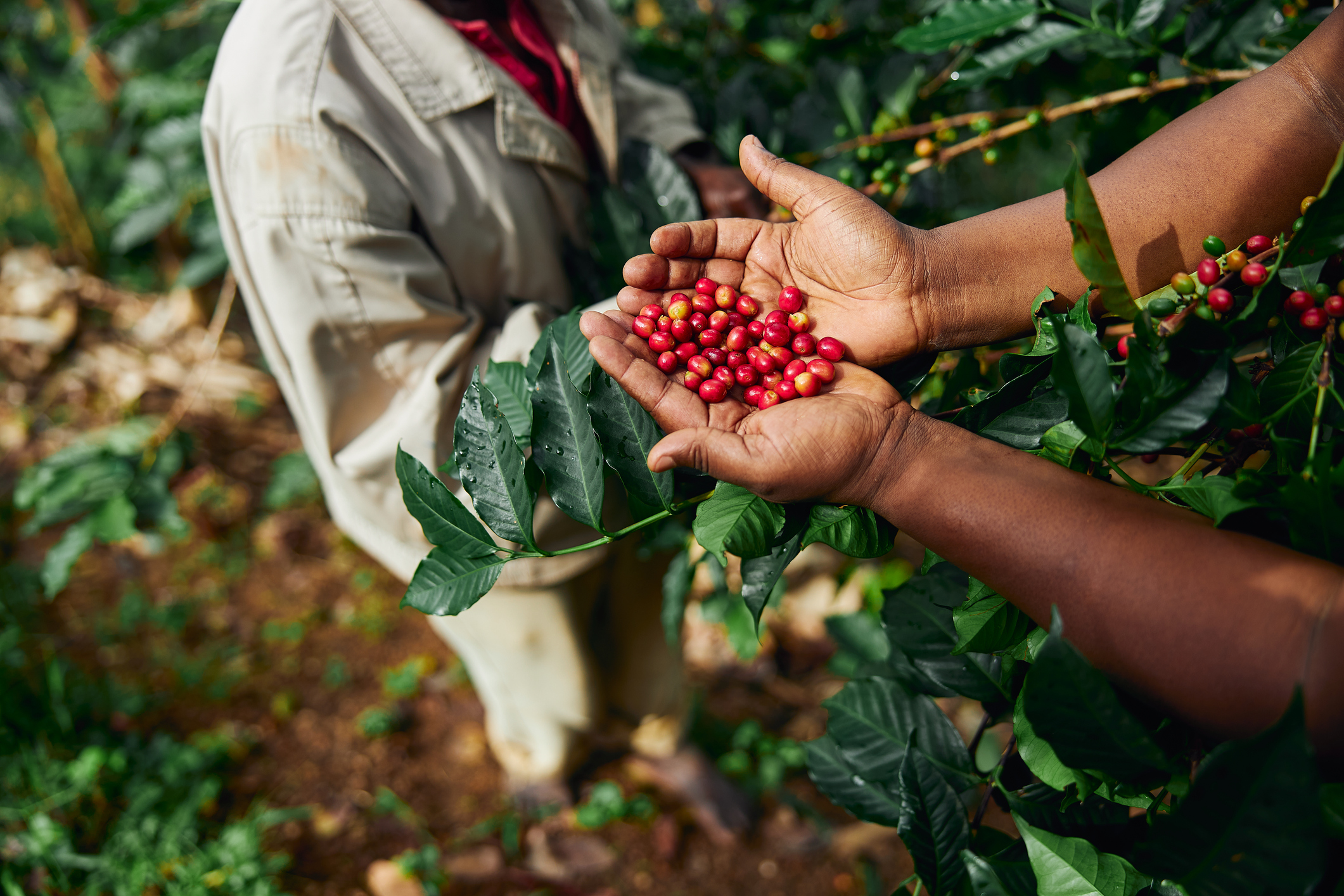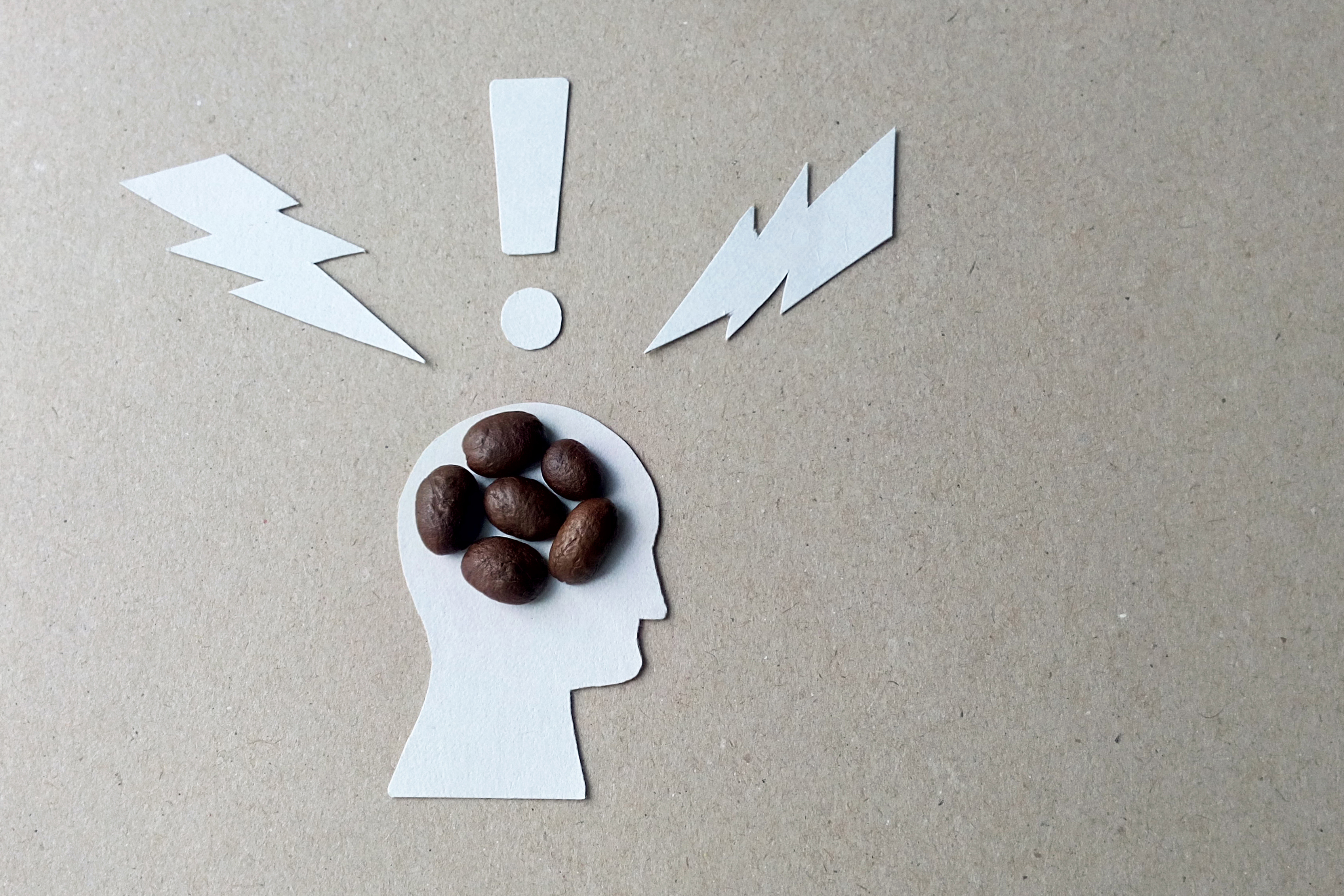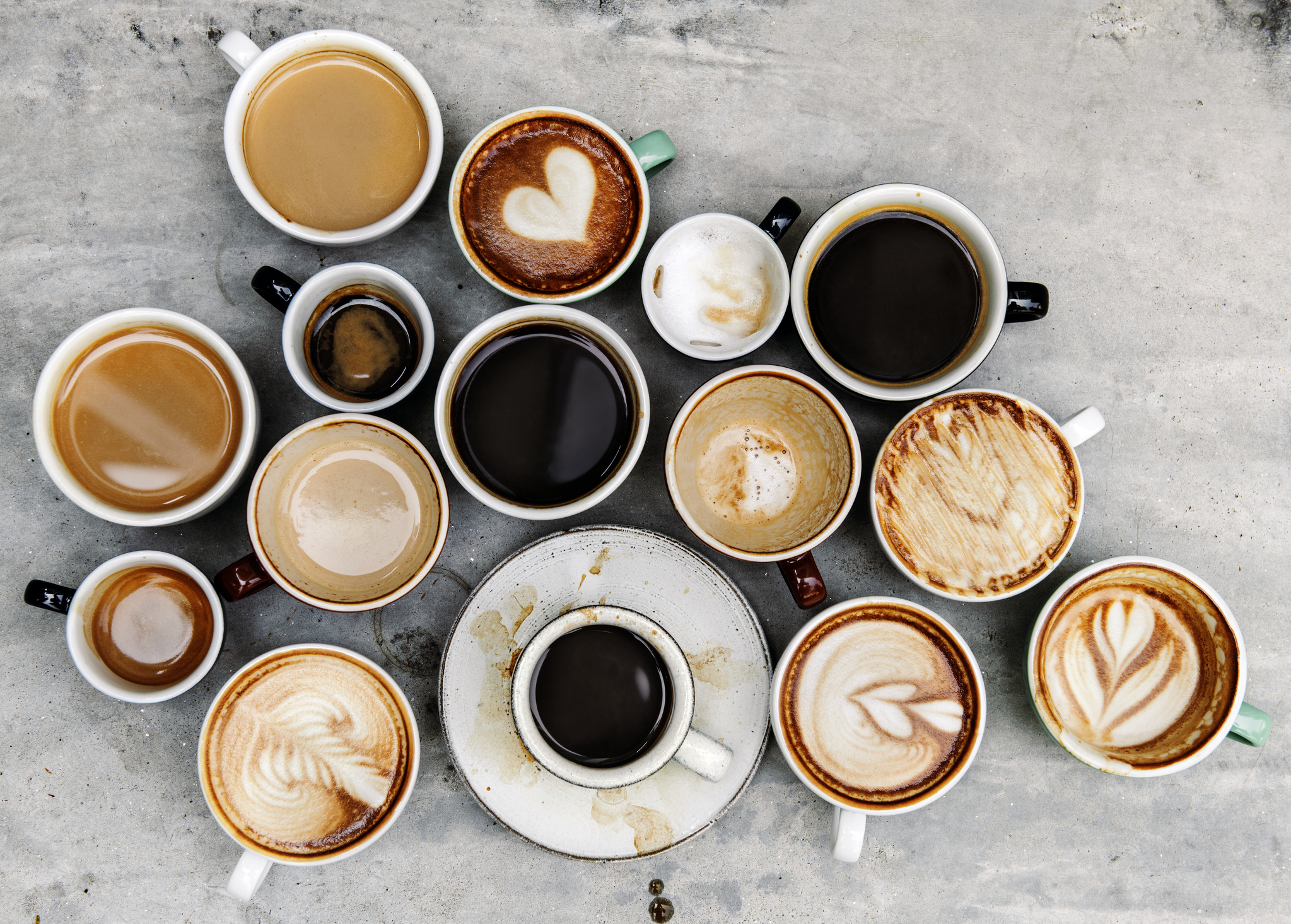- solen.cz - Caffeine, coffee and breastfeeding
- prolekare.cz - Coffee, its legend, history and influence on human health
- prolekare.cz - Coffee as a hepatoprotective factor
- prolekare.cz - Does coffee harm or benefit the heart?
- prolekare.cz - Coffee and sweetened drinks do not increase the risk of colorectal cancer
- prolekare.cz - How about a cup of coffee...
- prolekare.cz - Drinking coffee is associated with lower overall mortality
- liecive.herba.sk - Arabic coffee tree - Coffea arabica L. (Rubiaceae)
- sciencedirect.com - Coffea arabica
- sciencedirect.com - Coffee.
- sciencedirect.com - Coffee by-products derived resources. A review
Coffee: what are the types of coffee? Effect not only on weight loss + caffeine and its content

Many of us can't imagine a morning without a cup of coffee. Let's take a look at the effects coffee has on our bodies.
Article content
- The first mentions of coffee...
- Do you know when International Coffee Day is celebrated?
- Sources of caffeine
- What does the coffee plant look like?
- What are the effects of caffeine?
- What substances does coffee contain?
- Does decaffeinated coffee contain caffeine?
- What types of coffee are we familiar with?
- Coffee and heart
- What effect does drinking coffee, tea and sweetened drinks have on cancer?
- What effect does coffee have on our liver?
- Have you heard of the coffee diet?
- Can we overdose on caffeine?
Ella Fitzgerald sang about coffee. This may serve as proof that coffee is a special drink. Frank Sinatra wrote a song about Brazilian coffee. Bob Dylan wrote a song about an adventurous journey and a cup of coffee.
Coffee contains large amounts of antioxidants. There are about four times more antioxidants in a cup of coffee than in a glass of wine.
One American study reports that people who consume 5 cups of coffee a day have a lower death rate from certain diseases than people who don't drink coffee. This is regardless of whether they drink caffeinated or decaffeinated coffee.
People who drank 2 to 3 cups of coffee a day were found to have about 18% lower death rates than non-coffee drinkers.
This study found a lower risk of death from heart disease, chronic respiratory disease, diabetes, pneumonia and flu. It even found a lower number of suicides.
The first mentions of coffee...
The history of coffee is very interesting.
According to one legend, a goat herder in southwestern Ethiopia discovered the effects of coffee. He noticed that the goats grazing the red berries were very lively. The herder was curious and tasted the berries. He felt suddenly full of energy.
Another story tells of a monk named Faustus Naironus Bonesius. He drank an extract of coffee berries to help him pray longer at night. To make sure no one knew about the effects of the berries, he began to burn his supply of berries.
The smell of coffee quickly spread through the countryside and the secret of coffee roasting was revealed.
The largest coffee producers are Brazil, Colombia, Venezuela, Costa Rica and Southwest Asia. The largest coffee consumers are considered to be the people of the USA, Canada, Northern and Central Europe, Switzerland, Great Britain, Japan and the Arab States.
Did you know...
You buy coffee beans in a store and the coffee is the final product in your cup.
Do you know when International Coffee Day is celebrated?
International Coffee Day falls on October 1, celebrated since 2015. This coffee holiday was declared by the International Coffee Organization.
Sources of caffeine
The caffeine content of coffee varies. It depends on the geographical origin, the type of coffee plant and the processing method. Caffeine is a natural alkaloid.
It is found in various plants, e.g.:
- coffee beans (Coffea arabica, C. canephora)
- cocoa bean (Theobroma cacao)
- tea leaves (Camellia sinensis)
- maté leaves (Ilex paraguariensis)
- guarana berries (Paulinia cupana)
- cola nuts (Cola acuminata)
- holly
There are currently more than 100 known species of the genus Coffea. The best known species is the Arabic coffee tree, which accounts for about 70-90% of world coffee production.
The second most important species is the large coffee tree, otherwise known as the Congo coffee tree. This species has smaller and lower quality seeds than the previous species, which are used in blends with arabica.
Among the species of coffee tree that are grown mainly for their seeds is the Liberian coffee tree (Coffea liberica), which has lower quality seeds that are used in blends.
Another species is Coffea excelsa, which provides lower quality seeds. These have a strong pungent aroma and a high caffeine content.
Since 2008, a new species of Coffea charrieriana is known, whose seeds do not contain caffeine.
Did you know that...
Caffeine in plants has insecticidal and pesticidal effects.
The main sources of caffeine in our diet are coffee, tea, colas and energy drinks. Other sources include cocoa beans, which are used to make cocoa powder, and chocolate.
What does the coffee plant look like?
Evergreen coffee trees have white flowers. Each year an adult coffee tree produces approximately 30,000 to 40,000 flowers. The flowers produce a glue-like secretion that protects the entire plant from desiccation and insects.
When the flowers are dried, they can be made into tea. The scent of the flowers gives the tea a jasmine flavour.
After fertilisation, the flowers produce mainly red fruits, which are called coffee cherries. Approximately 3% of the Arabic coffee tree (Coffea arabica) produces yellow fruits. Some species produce black or black and yellow striped fruits.
A large part of the coffee cherry is the flesh, which contains protein (4 % to 12 %), fat (1 % to 2 %), minerals (6 % to 10 %) and carbohydrates (45 % to 89 %). Caffeine is present in large quantities (1,3 %). The flesh of the cherry is also used to make jams, juices and jellies.
The skin, which is the skin of the cherry, contains protein (8 % to 11 %), fat (0,5 % to 3 %), minerals (3 % to 7 %) and carbohydrates (58 % to 85 %). Caffeine and tannins make up 1 % to 5 % of the cherry skin.
Coffee trees have glossy, waxy leaves that are always green. Interestingly, the leaves almost never turn brown. The exception is when they are stressed or attacked by disease. Coffee tree leaves are used to make beverages that are similar to tea.

What are the effects of caffeine?
Caffeine is generally known to be addictive.
It is considered to be the most widely used stimulant. People reach for a cup of coffee primarily to improve concentration, increase work performance, reduce feelings of fatigue and feel a sense of euphoria after drinking this beverage.
In pharmacy and medicine, caffeine is a non-selective adenosine receptor antagonist, a phosphodiesterase inhibitor, and reduces intracellular calcium release in skeletal and cardiac muscle and in nervous tissues.
It has a stimulatory effect on the central nervous system.
This means that:
- reduces the feeling of fatigue
- improves mood
- increases activity
Caffeine causes a slight increase in blood pressure. In addition to the above effects, caffeine has diuretic, bronchodilator and analgesic effects.
Few people know that it activates gastric secretion.

Did you know that...
Five cups of espresso (30 ml, 60 mg caffeine) represents a daily intake of 300 mg caffeine.
What substances does coffee contain?
Fresh coffee beans are green and have no taste or smell.
Green coffee contains:
- caffeine (2,5 %)
- caffeic acid and quinic acid (10 %)
- carbohydrates (30-40%)
- protein (13 %)
- fats and waxes (10-15 %)
- water (10-13 %)
In addition to the above, raw beans contain about 4 % of minerals(potassium, magnesium, calcium, phosphorus, iron).
Did you know that...
The caffeine content depends on the type of coffee plant. Arabica contains approximately 1,2 % caffeine. Robusta has 2,2 % caffeine in the dry matter.
In addition to caffeine, roasted coffee contains a mixture of more than 1,000 substances.
The substances contained in coffee include:
- Diterpenes (kafestol and kahweol) - increase total and LDL cholesterol levels. Filtering coffee reduces the diterpene content.
- Chlorogenic acid - reduces glucose absorption and insulin resistance.
- Magnesium
- Potassium
- Niacin
- Vitamin E
Does decaffeinated coffee contain caffeine?
Most of us think that decaffeinated coffee does not contain any amount of caffeine. However, it also contains a minimal amount of caffeine.
The technology for removing caffeine from coffee beans can be divided into 3 methods:
- Indirect method - Extraction of caffeine using organic solvents.
- The Swiss method (wet method) - Removal of caffeine by multiple extractions in water. The leachates obtained are filtered and then these leachates are filtered on a series of carbon filtration devices.
- A method that uses supercritical gases.
The final product of decaffeinated coffee always contains caffeine (0,1 %-0,3 %). Those who prefer decaffeinated coffee should know that one cup contains 1,0 mg to 5,0 mg of caffeine.

What types of coffee are we familiar with?
The following table gives examples of types of coffee:
| Type of coffee | Composition and preparation |
| Espresso |
|
| Espresso Macchiato |
|
| Cappuccino |
|
| Caffé Latte |
|
| Latte Macchiato |
|
| American coffee |
|
| Espresso Lungo |
|
Coffee and heart
Until recently, people who suffered from heart problems were not recommended to drink coffee. Experts believed that caffeine could worsen the development of cardiovascular disease and increase the risk of heart attacks and strokes.
Nowadays, scientific studies have been published that suggest that regular coffee drinking may be beneficial for human heart health. In addition to caffeine, coffee also contains polyphenols, which have antioxidant properties.
Polyphenols improve the function of the lining of blood vessels and heart cavities. As a result of their action, the endothelium of the arteries is healthy, so blood flows better and the heart works better.
According to two large scientific studies, there is no link between coffee drinking and an increased risk of heart disease. If a person drinks 3 to 5 cups of coffee a day, he or she even has a reduced risk.
As they say, everything in moderation... Again, if you don't overdo it with your coffee drinking, you don't have to worry about a heart attack from coffee.
Did you know...
If you drink 2 to 3 cups of coffee a day, you reduce your risk of stroke by 20%.
However, if you suffer from arrhythmia or have had a heart attack, you should be careful when drinking coffee. Caffeine increases blood pressure, causing the heart to work harder and faster. This can result in serious health problems.
What effect does drinking coffee, tea and sweetened drinks have on cancer?
According to several studies, drinking coffee reduces the risk of cancer:
- bladder
- breast
- oral cavity
- colorectal cancer
- endometrial cancer
- prostate
- hepatocellular carcinoma
One scientific study looked at the effect of drinking black tea on the development of colorectal cancer. The investigation found that participants who drank more than 4 cups of black tea had an increased risk of developing colorectal cancer.
However, this result may be biased because the authors did not examine other factors.
In another study, colorectal cancer was diagnosed in less than one person in 100. The study found that drinking coffee or sweetened sodas had no effect on the incidence of cancer.
However, drinking sweetened beverages is a risk factor for diabetes and obesity.
What effect does coffee have on our liver?
Coffee is considered a non-pharmacological agent for the primary and secondary prevention of chronic liver diseases. This drink is one of the preventive factors for the progression of fibrosis, the prevention of cirrhosis and the prevention of hepatocellular carcinoma.
At present, many scientific studies have been published according to which drinking coffee reduces the incidence of hepatocellular carcinoma.
This claim is presented in a body of evidence as strong as the claim that being overweight, obese or consuming 3 or more glasses of alcohol per day increases the risk of hepatocellular carcinoma.
Based on the results of large population studies that have examined the effect of coffee and green tea, it is assumed that the anticancer effect is not due to caffeine.
According to the results, this effect is due to chlorogenic acids, which serve as free oxygen radical scavengers.
Have you heard of the coffee diet?
The coffee diet came to people's attention thanks to the book The Coffee Lover's Diet. In the book, the author states that drinking coffee several times a day can speed up metabolism, help burn more fat, block calorie absorption and reduce appetite.
What does the coffee diet plan look like?
The book recommends drinking at least 3 cups of coffee a day. It is important that the minimum volume of coffee you drink is 720 ml. You can choose caffeinated or decaffeinated coffee. The coffee should be of good quality. It is important that you do not add sugar and cream to your coffee.
According to the author, you should drink light roast coffee, which contains more antioxidants. You should choose light roast coffee that you grind and prepare at home using filtered water.
On this diet, it is recommended to replace one meal a day with a homemade high-fibre green smoothie. Other meals should be low in calories and fat. You should ensure that the foods in your diet are rich in fibre.
The author of the book emphasizes that you should eat a lot of fruits and vegetables, which should be of good quality.
A sample diet is given in the book, which is worth 1500 calories per day. This is much less calories than a person needs. Thus, this diet is not based on drinking coffee, but on limiting calorie intake.
How can coffee help with weight loss?
Coffee is a popular drink among people who want to lose weight. It has many effects that can help in weight loss:
- Coffee is low in calories
- Caffeine speeds up metabolism
- Caffeine reduces levels of the hunger hormone ghrelin
Can we overdose on caffeine?
The answer to this question is YES.
Caffeine has a lethal dose of 5-50 g (100-200 mg/kg of weight).
Symptoms of overdose include:
- Motor restlessness
- Delirium
- shortness of breath
- cardiac arrhythmias
- nausea
- vomiting
Did you know that...
Caffeine is a diuretic and therefore we cannot count the volume of coffee we drink in our drinking regime.
Interesting resources
Related










